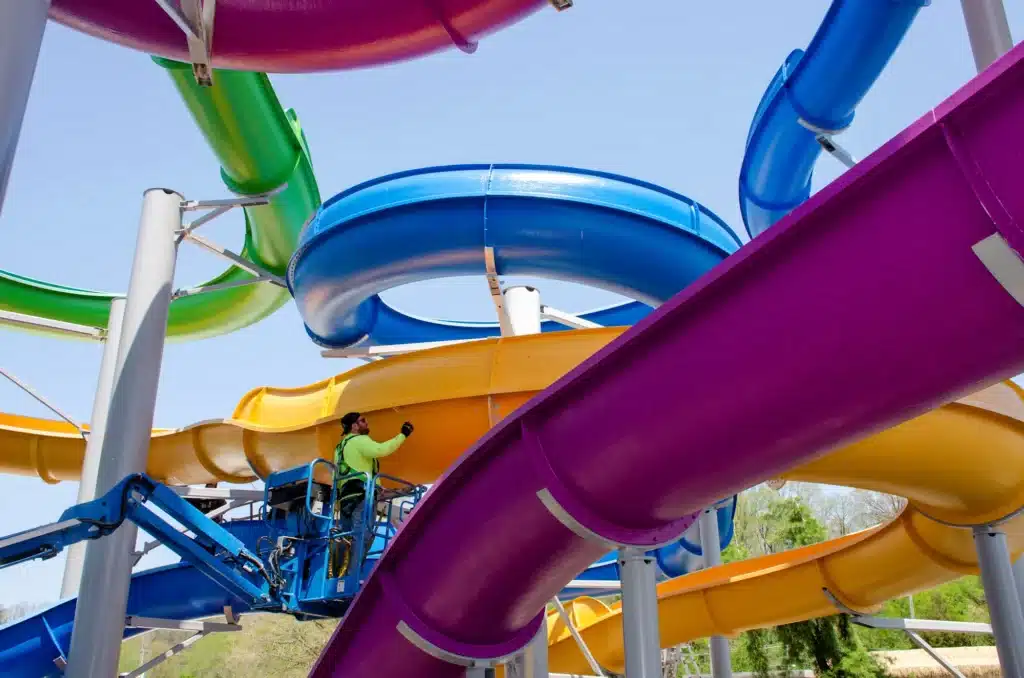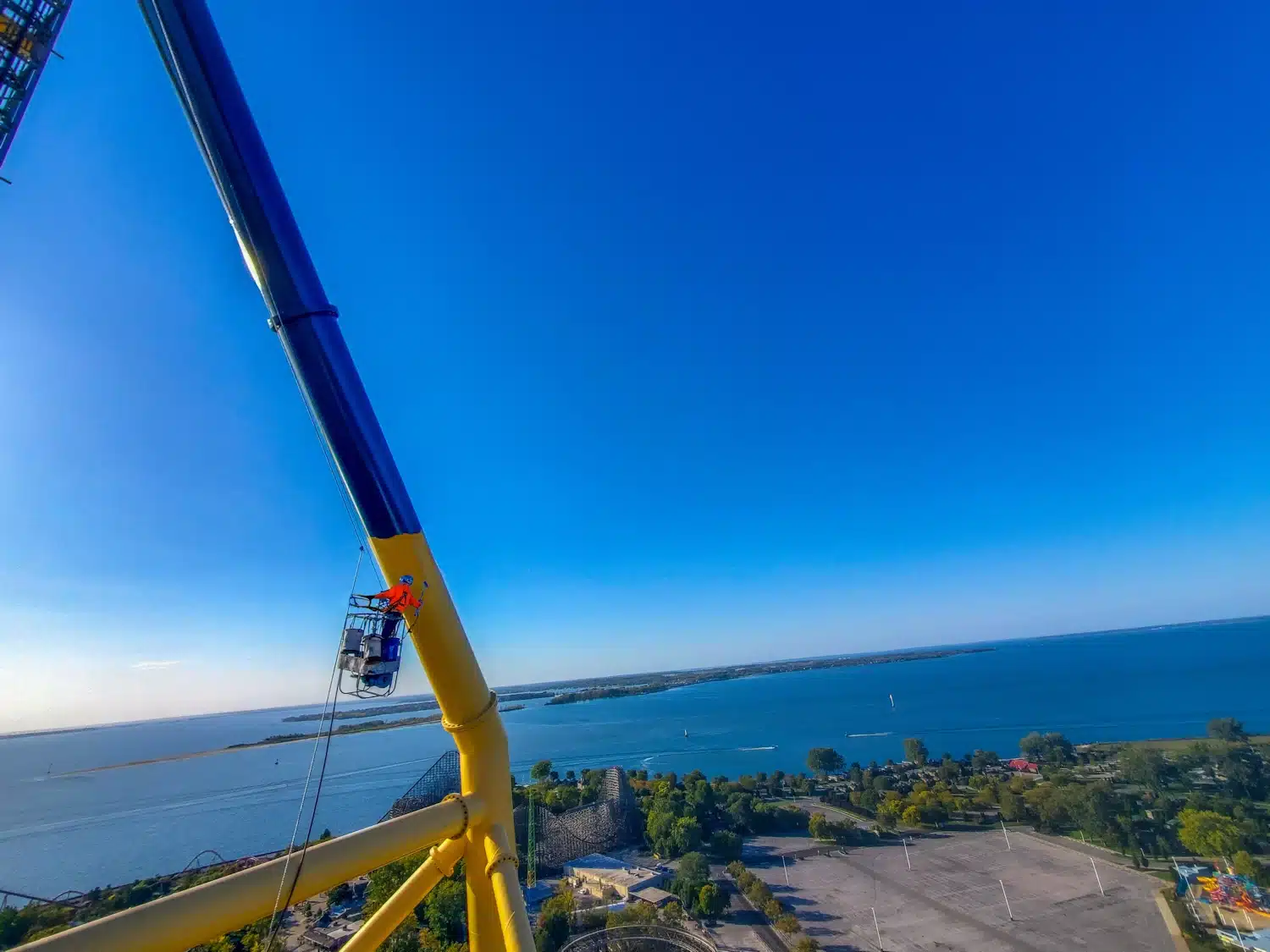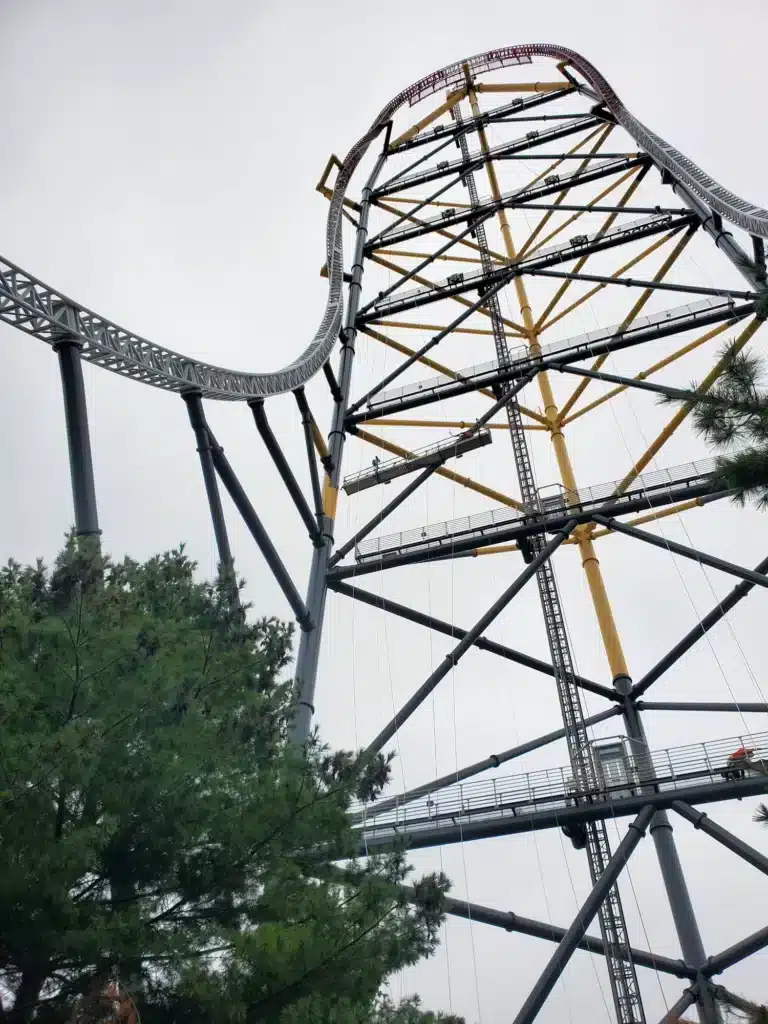Assess your access: A critical consideration for painting attractions
When amusement park operators and maintenance directors plan to bring in contractors for painting or restoration work on attractions, one often overlooked yet vital factor is access, says Melissa Bamford, Director of Marketing at Baynum Solutions.
When amusement park operators and maintenance directors plan to bring in contractors for painting or restoration work on attractions, one often overlooked yet vital factor is access
It’s not just about the work itself – painting attractions requires reaching every square inch of a structure. For companies like Baynum Amusement Solutionshttps://baynum.com/, where precision and quality are paramount, understanding how to access each area of a ride or attraction is critical to achieving long-lasting results.
Here, we’ll explore why assessing access is crucial, how it impacts project scope and costs, and how choosing an experienced contractor with a proven track record in complex environments can save time, money and hassle.
Why access assessment matters
- Complete coverage is non-negotiable
In professional attraction painting, the coatings we use demand precise application techniques. Unlike other industries where spraying may suffice, attractions require brushing and rolling to ensure complete coverage, adhesion and compliance with manufacturer specifications. This eliminates the risk of overspray – a concern when working with high-performance coatings that can travel great distances due to their chemical composition.
Failing to reach every surface compromises the protective benefits of the coating and can leave critical areas exposed to corrosion, UV damage and general wear. For operators, this means potential safety hazards, higher long-term costs and diminished aesthetic appeal.
- Equipment determines feasibility
Every ride has its own unique challenges when it comes to access. From towering steel roller coasters to winding waterslides, no two structures are alike. A thorough assessment ensures we know exactly how to reach each area. Will a standard man lift work for the entire project, or will swing stages, spider baskets or cranes be necessary?
Access methods directly impact the project timeline, cost and even safety protocols:
- Man lifts: Efficient and cost-effective for most projects but limited by terrain and height.
- Swing stages: Ideal for vertical surfaces but require extensive setup.
- Cranes: Necessary for extreme heights or inaccessible areas but come with significant logistical planning and expense.
- Spider baskets: Perfect for tight spaces or intricate layouts, but require skilled, experienced operators due to their complexity.
- Scaffolding: Reliable for multi-height access but time-intensive to set up and dismantle.
By understanding these limitations upfront, we can determine the best approach to balance efficiency, quality and cost.

Cedar Point’s Top Thrill 2 rollercoaster being accessed by Spider Basket
Access challenges to consider
- Ground conditions
Accessing an attraction isn’t just about height – it’s about what’s under the equipment. Can the ground support heavy equipment? Wet soil from recent rain, fragile decking or underground utilities can all create complications. In such cases, alternative solutions may be necessary, like mats to distribute weight or specialty equipment designed for rough terrain.
- Obstacles on the ground
Fences, landscaping, and surrounding structures often restrict the placement of lifts or cranes. Sometimes, these obstacles mean we need to use a crane just to lift equipment into place before we can even start work.
- Weather and environmental factors
Even with the right plan, external factors like wind, rain, or extreme heat can delay operations or require changes to equipment and schedules. A contractor experienced in working under these conditions will anticipate potential delays and include contingency plans in their project timelines.
The cost implications of access
Access isn’t just a logistical consideration – it directly impacts the bottom line. Not only do the types of access equipment needed affect costs (e.g. man lifts vs cranes), but thorough access assessments early in the bidding process are critical to avoiding unpleasant surprises later.
While clients may provide site details, it’s easy for some factors like obstacles, terrain or height challenges to be unintentionally overlooked. When these issues arise mid-project, they often lead to unforeseen change orders that result in delays and additional costs. To mitigate this, we emphasise the importance of on-site evaluations to identify these challenges early and establish an accurate plan of action.
When in-person visits are impractical, we collaborate with our trusted lift partners. Their expertise and tools, such as laser rangefinders, allow us to evaluate access requirements remotely with precision. By taking these proactive steps, we help ensure projects remain on time, on budget and free of unnecessary surprises.
Best access practices for park operators
If you’re considering painting or restoration work on your attractions, here are some steps to ensure success:
- Conduct a pre-project assessment
Collaborate with your contractor to review the attraction’s layout and identify access challenges. Bring attention to any potential ground issues, surrounding structures or unique ride features.
- Request a detailed access plan
Your contractor should provide a clear plan outlining how each area will be reached, what equipment will be used and the estimated costs for each method.
- Plan for contingencies
Access challenges can arise unexpectedly, so build some flexibility into your project timelines and budgets.
- Choose an experienced contractor
Look for contractors with a proven track record in amusement park projects. Their experience will minimise delays, improve quality and ensure compliance with industry standards.

An attraction’s layout needs to be reviewed and any access challenges identified
Where access begins
At Baynum Amusement Solutions we believe that proper planning is the foundation of any successful project. By thoroughly assessing access needs, we ensure that every inch of an attraction receives the care and attention it deserves. This attention to detail not only preserves the integrity and safety of your assets but also protects your investment for years to come.
When you partner with us, you’re choosing a company that understands the intricacies of amusement park painting and restoration. Our expertise, combined with our trusted supplier and rental equipment partnerships, guarantees quality results – even in the most challenging environments.

